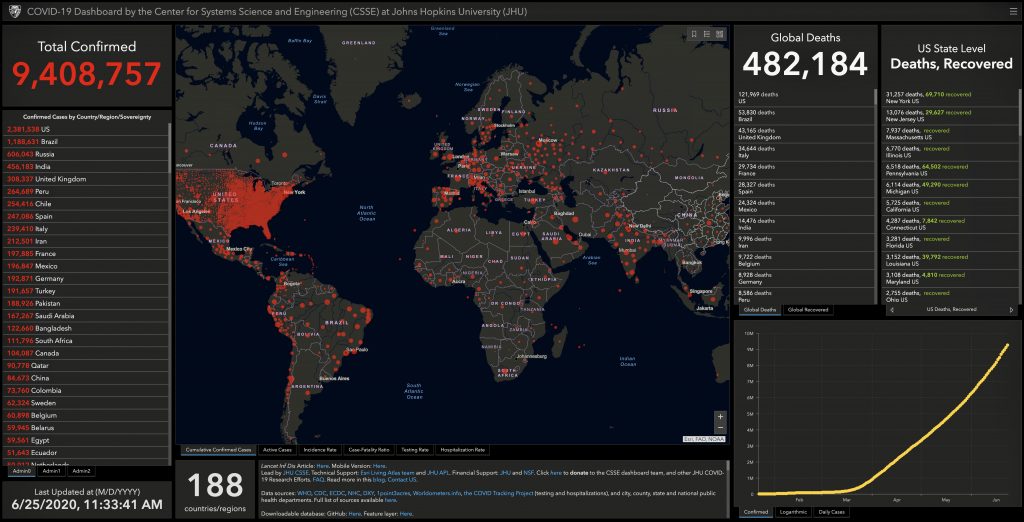The International Air Transport Association (IATA) urged governments in its weekly media call on Wednesday (24 June) to avoid quarantine measures when re-opening their economies. The association is promoting a “layered approach” of measures to reduce the risk of countries importing COVID-19 via air travel and to mitigate the possibility of transmission in cases where people may travel while unknowingly being infected.

“Imposing quarantine measures on arriving travellers keeps countries in isolation and the travel and tourism sector in lockdown. Fortunately, there are policy alternatives that can reduce the risk of importing COVID-19 infections while still allowing for the resumption of travel and tourism that are vital to jumpstarting national economies,” said Alexandre de Juniac, IATA’s director general and CEO. “We are proposing a framework with layers of protection to keep sick people from traveling and to mitigate the risk of transmission should a traveller discover they were infected after arrival.”
IATA Coronavirus Resource Centre
ICAO Coronavirus Resource Centre
Air Cargo COVID-19 Action Page
IATA TACT COVID-19 Operational Impact Portal
IATA Quick Reference for Ground Handling During COVID-19
IATA Guidance on the Safe Carriage of Cargo in the Passenger Cabin
WHO: Coronavirus disease (COVID-19) Pandemic
International Society for Infection Diseases COVID-19 Page
ICAO CART Take-off Guidance
IATA is promoting “a layering of bio-safety measures” in a variety of ways including:
Reducing the risk of imported cases via travellers: Discouraging symptomatic passengers from traveling: It is important that passengers do not travel when ill. To encourage passengers to “do the right thing” and stay home if they are unwell or potentially exposed, airlines are offering travellers flexibility in adjusting their bookings.
Public health risk mitigation measures: IATA supports health screening by governments in the form of health declarations. To avoid privacy issues and cut the risk of infection with paper documents, standardised contactless electronic declarations via government web portals or government mobile applications are recommended.
COVID-19 testing for travellers from countries perceived to be “higher-risk”: When accepting travellers from countries where the rate of new infections is significantly higher, the arrival authority could consider COVID-19 testing. It is recommended that tests are undertaken prior to arrival at the departure airport (so as not to add to airport congestion and avoid the potential for contagion in the travel process) with documentation to prove a negative result. Tests would need to be widely available and highly accurate, with results delivered quickly. Test data would need to be independently validated so as to be mutually recognised by governments and securely transmitted to the relevant authorities. Testing should be for active virus (polymerase chain reaction or PCR) rather than for antibodies or antigens.
Reducing the risk of transmission during the air travel journey: IATA encourages the universal implementation of the Take-Off guidelines published by the International Civil Aviation Organization (ICAO). Take-Off is a temporary risk-based and multi-layered approach to mitigate the risks of transmitting COVID-19 during air travel. The comprehensive Take-Off guidelines are closely aligned with the recommendations of the European Union Aviation Safety Agency (EASA) and the US Federal Aviation Administration (FAA). These include mask wearing throughout the travel process, sanitisation, health declarations and social distancing where possible.
Contact tracing: This is the back-up measure, should someone be detected as infected after arrival. Rapid identification and isolation of contacts contains the risk without large-scale economic or social disruption. New mobile technology has the potential to automate part of the contact-tracing process, provided privacy concerns can be addressed.
Reducing risk of transmission at destination: Governments are taking measures to limit the spread of the virus in their territory that will also mitigate the risk from travellers. In addition, the World Travel and Tourism Council (WTTC) Safe Travel protocols provide a pragmatic approach for the hospitality sector to enable safe tourism and restore traveller confidence. Areas of the industry covered by the protocols include hospitality, attractions, retail, tour operators, and meeting planners.
“Safely restarting the economy is a priority. That includes travel and tourism. Quarantine measures may play a role in keeping people safe, but they will also keep many unemployed,” de Juniac said. “The alternative is to reduce risks through a series of measures. Airlines are already offering flexibility so there is no incentive for sick or at-risk people to travel. Health declarations, screening and testing by governments will add extra layers of protection. And if someone travels while infected, we can reduce the risk of transmission with protocols to prevent the spread during travel or when at destination. And effective contact tracing can isolate those most at risk without major disruptions.”





0 Comments